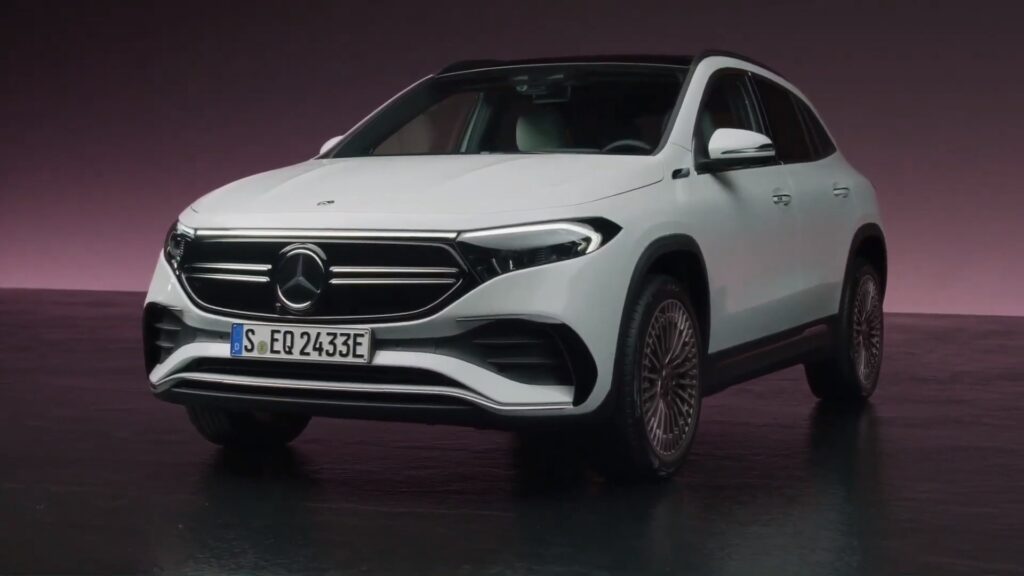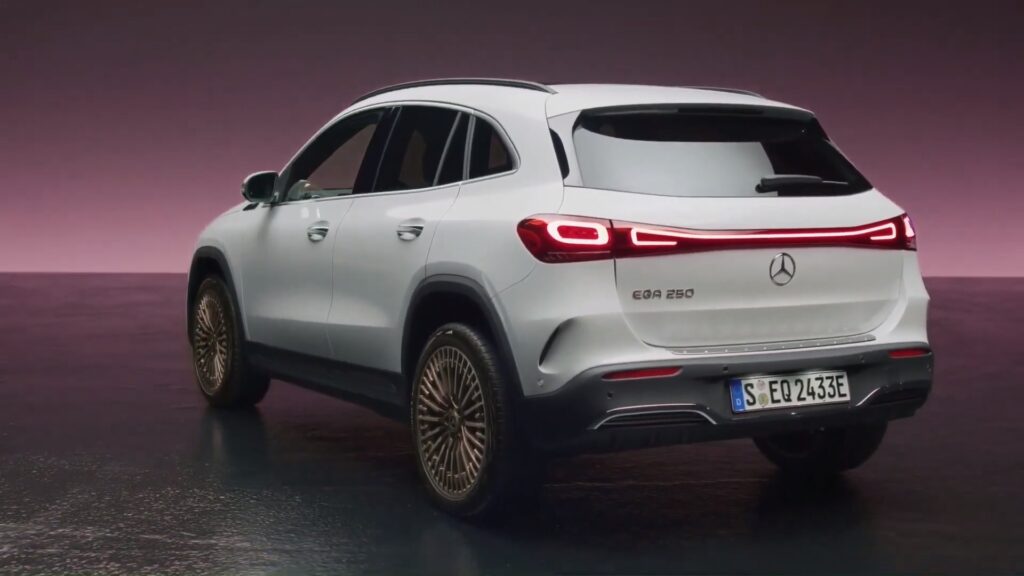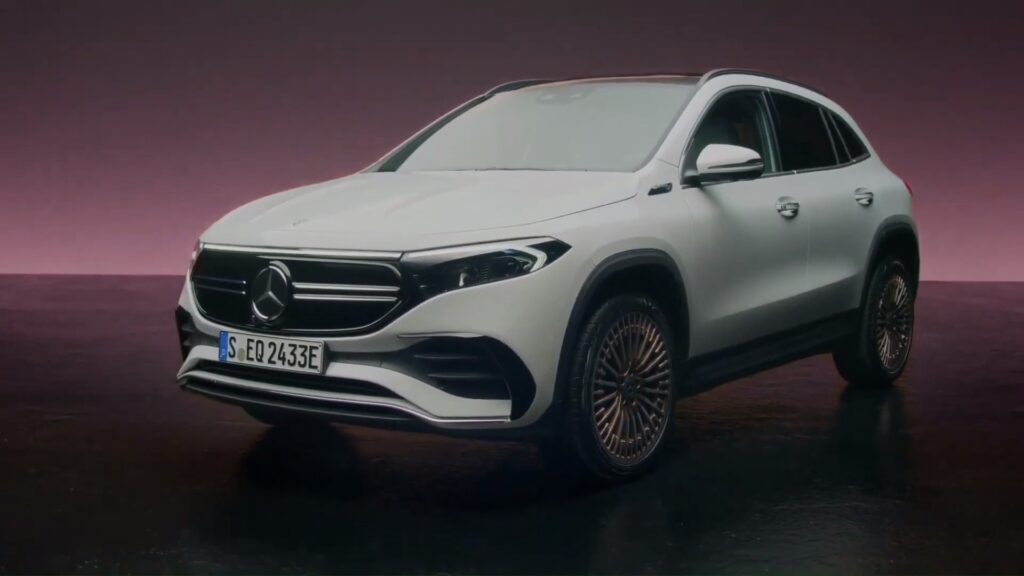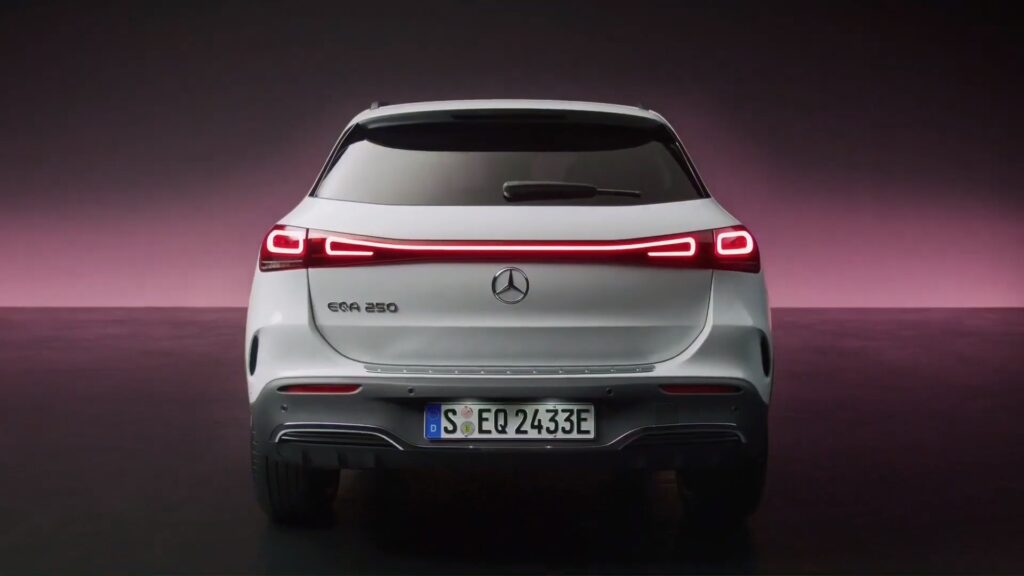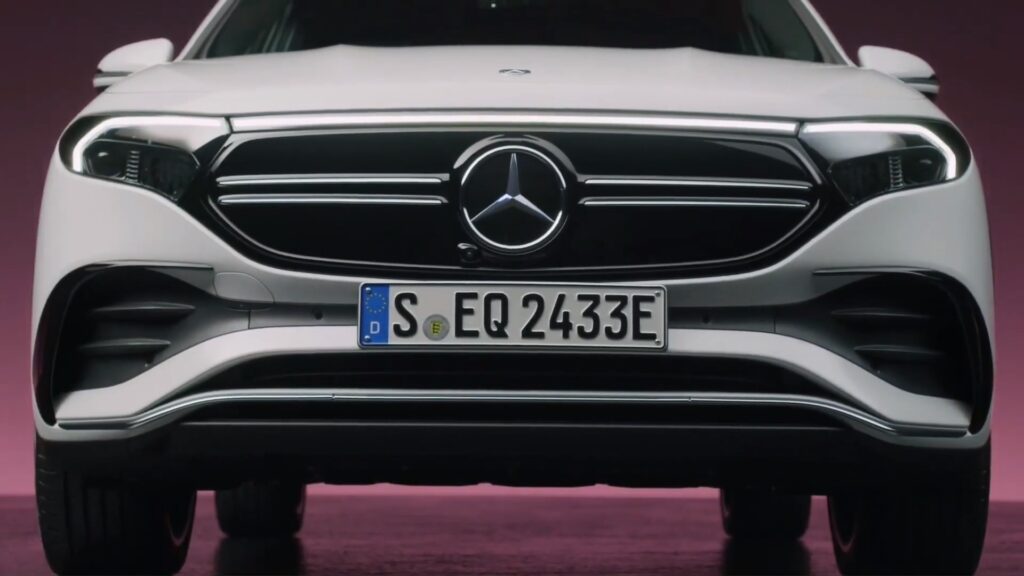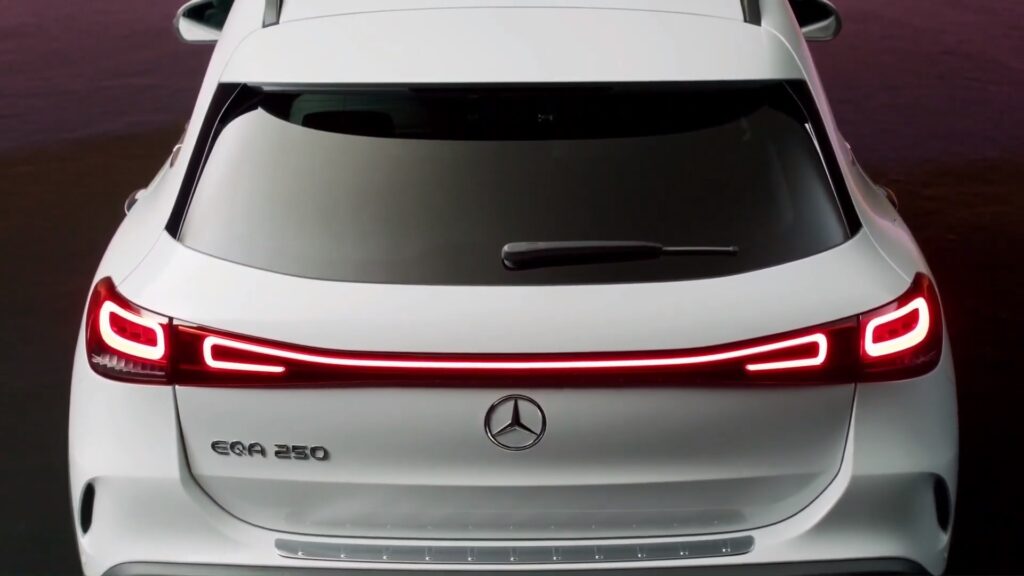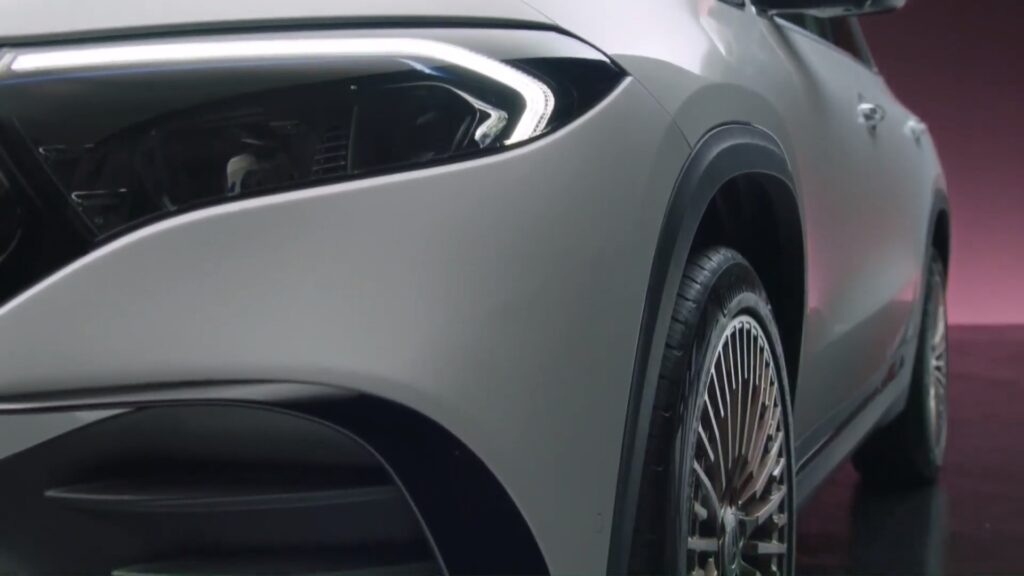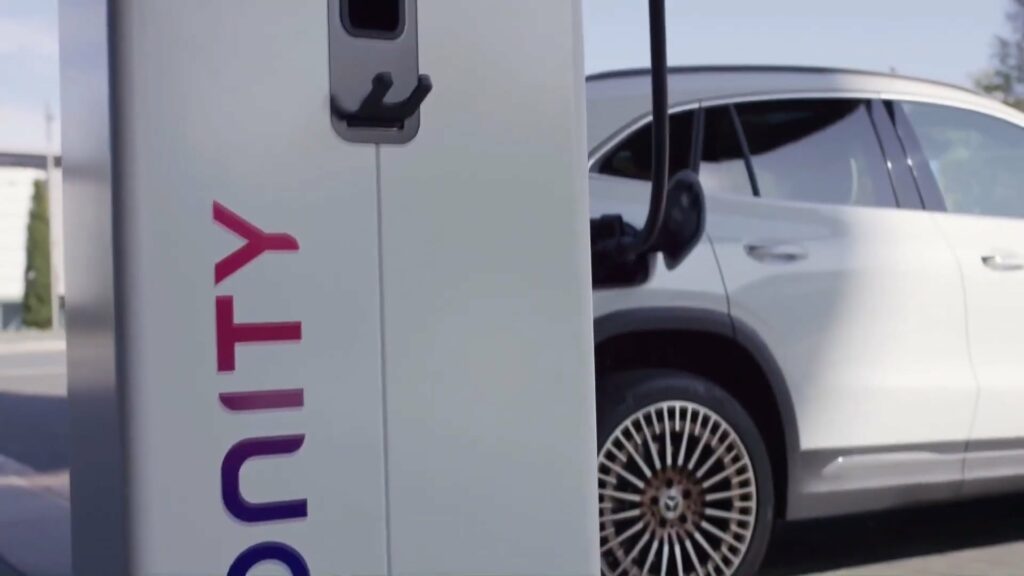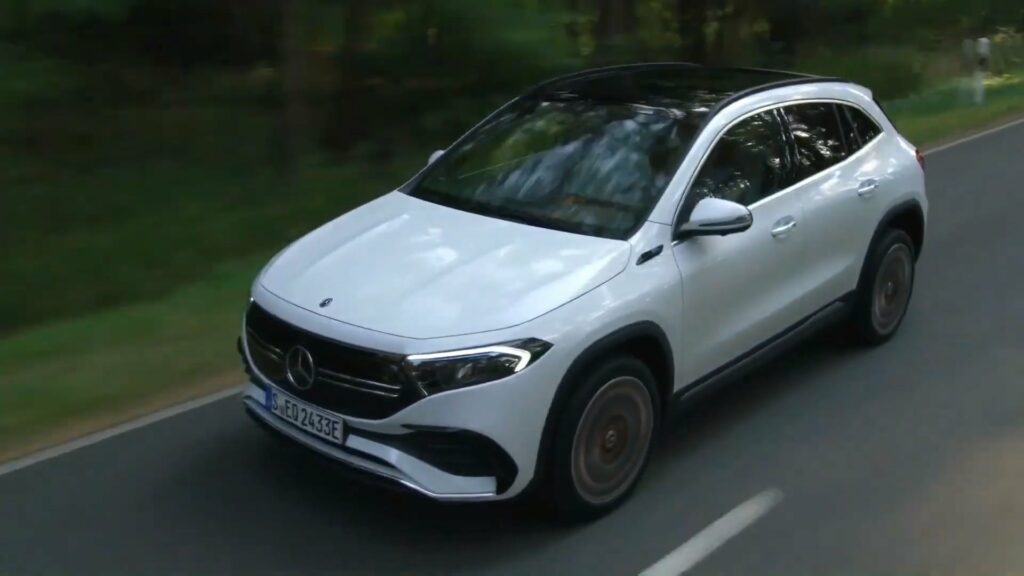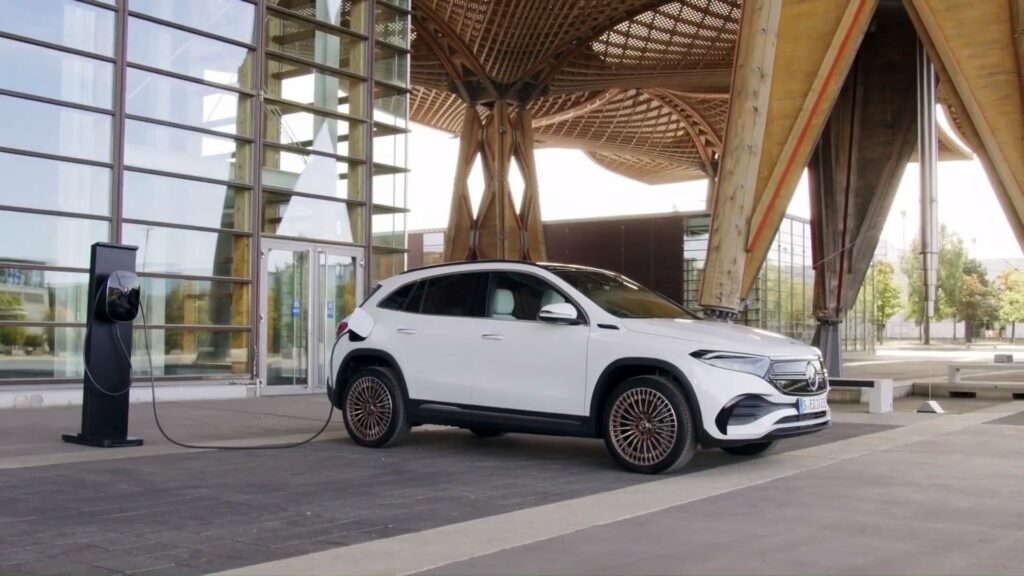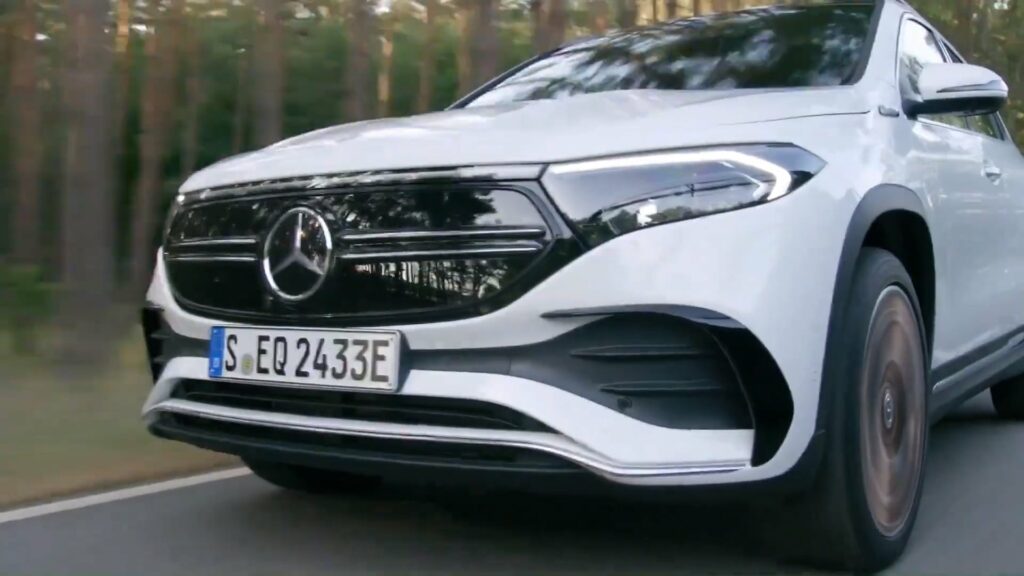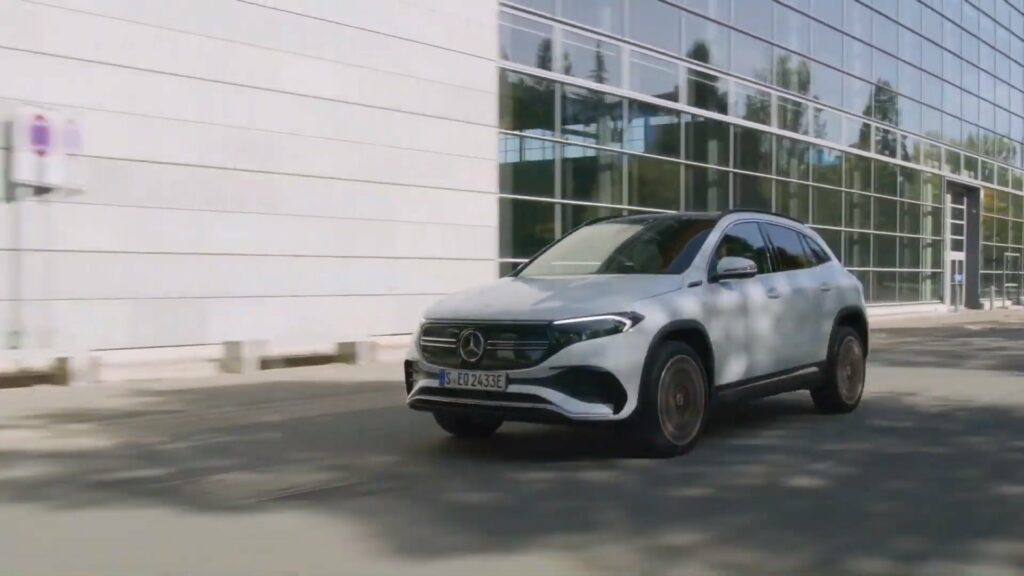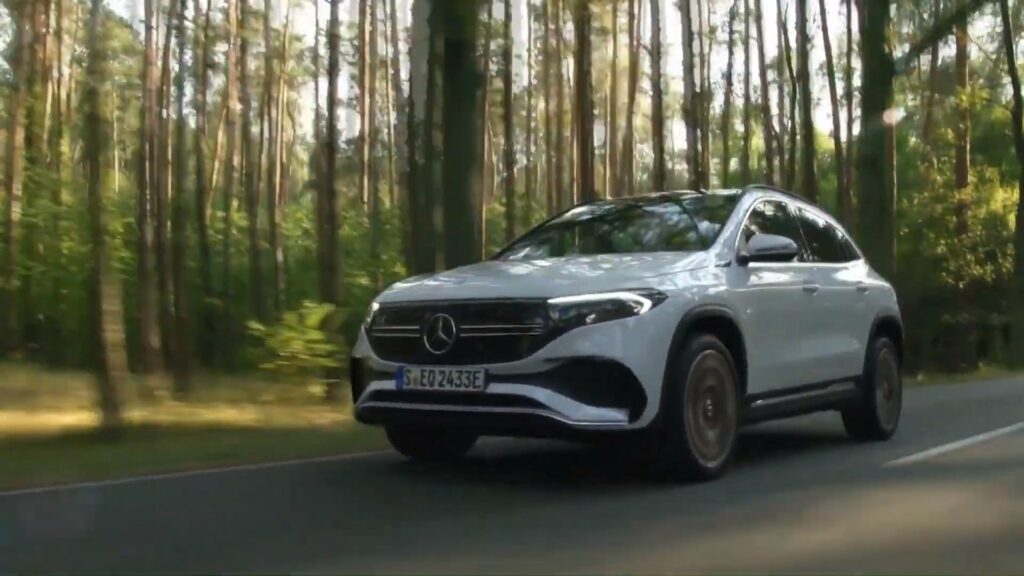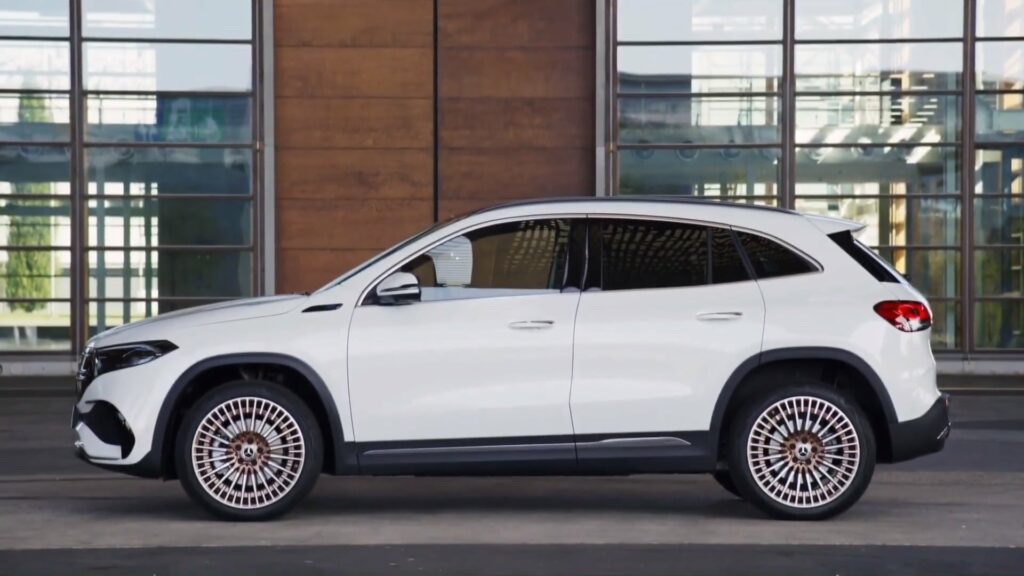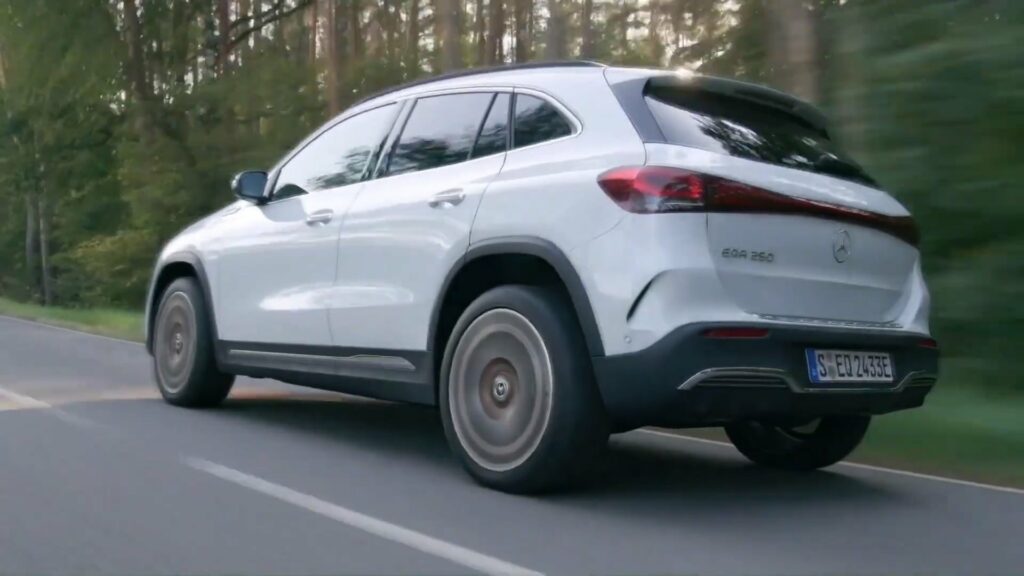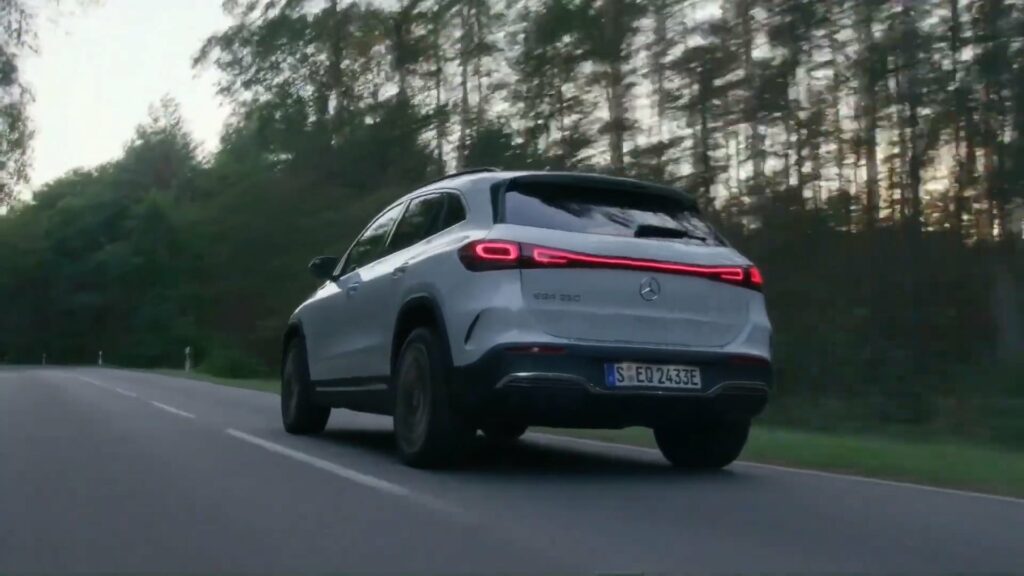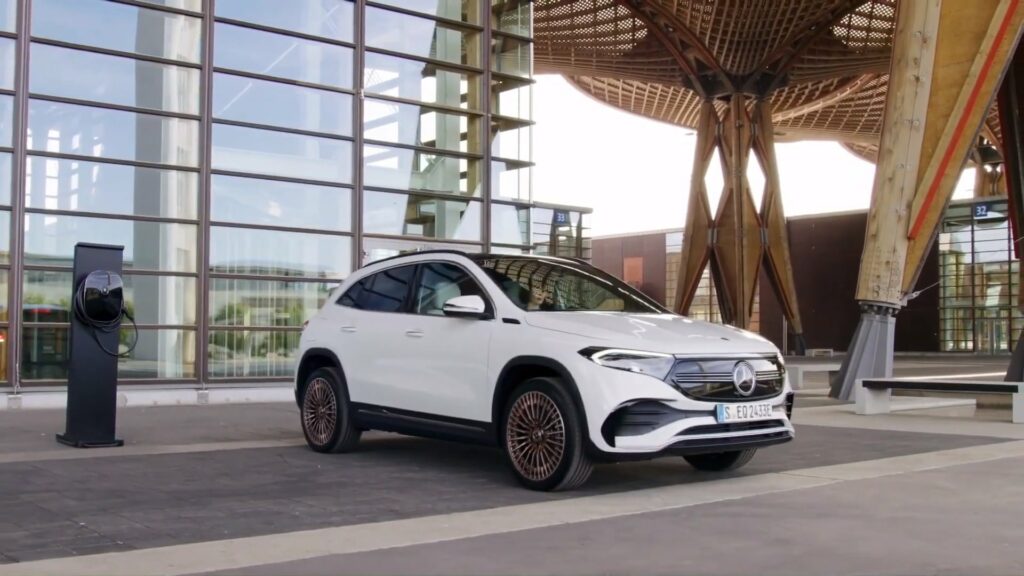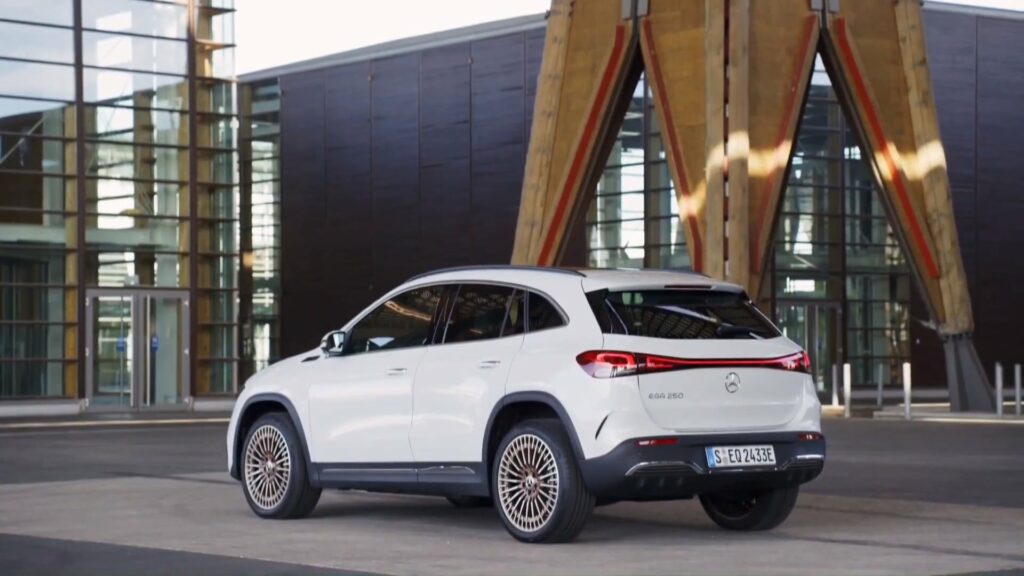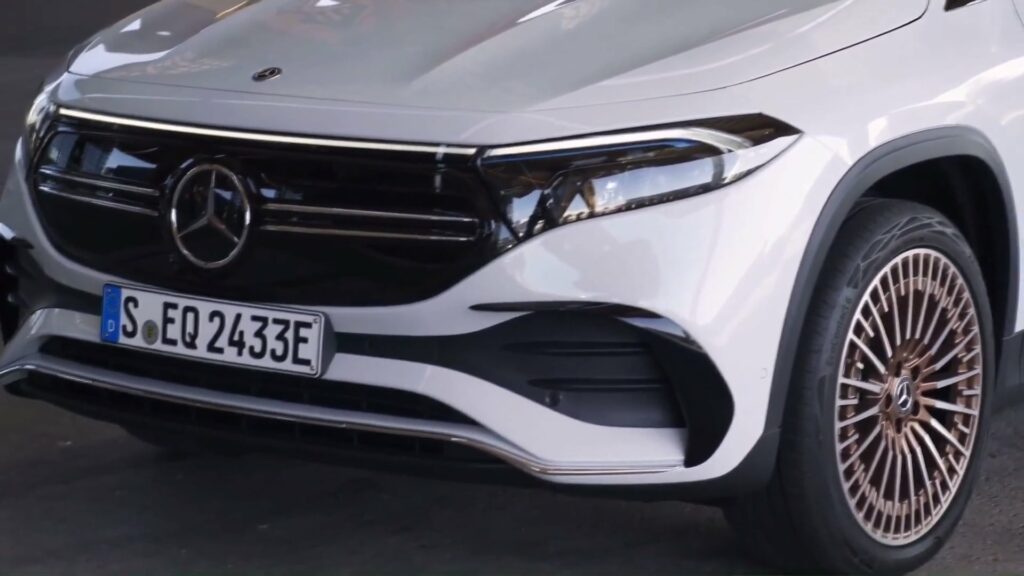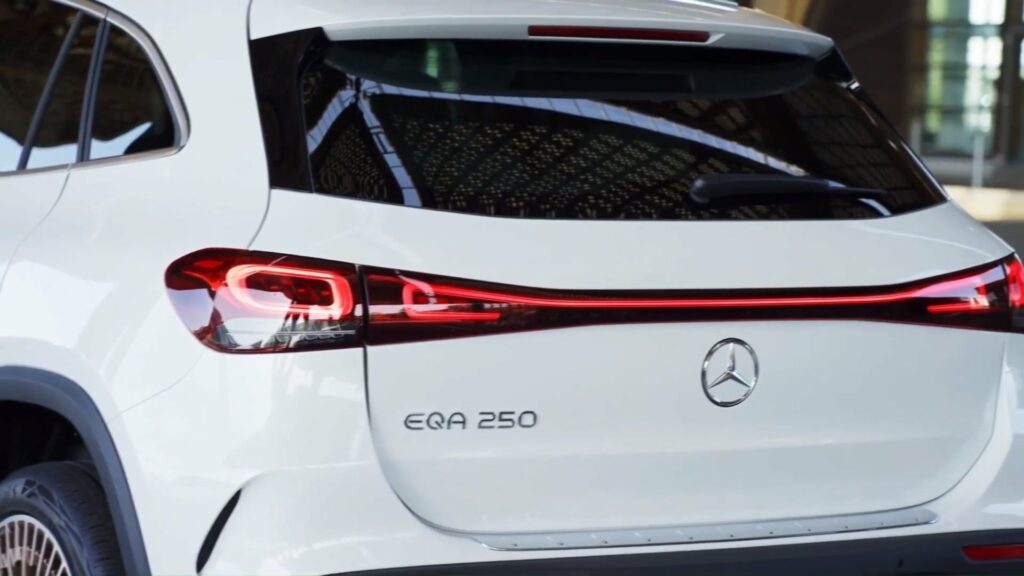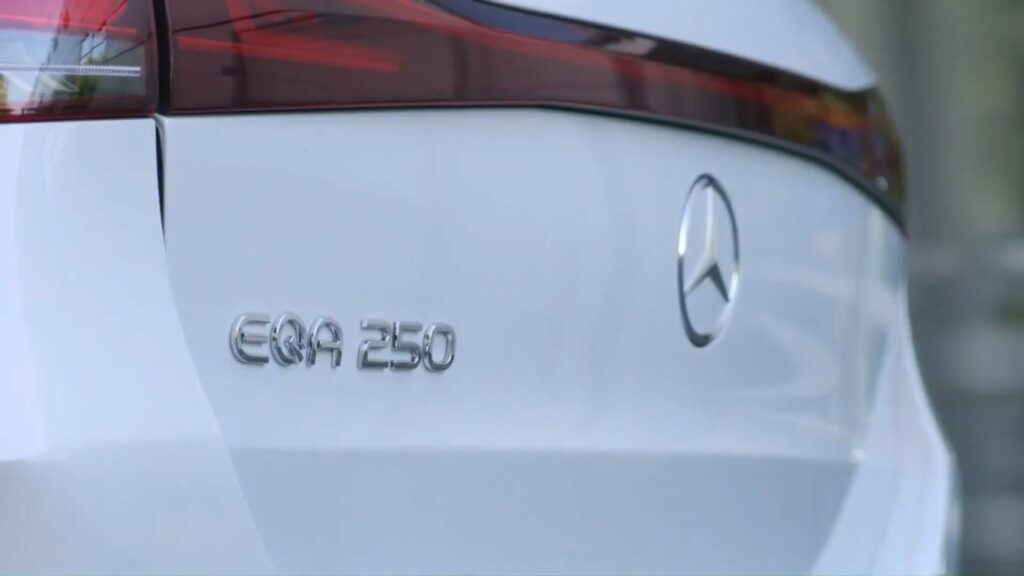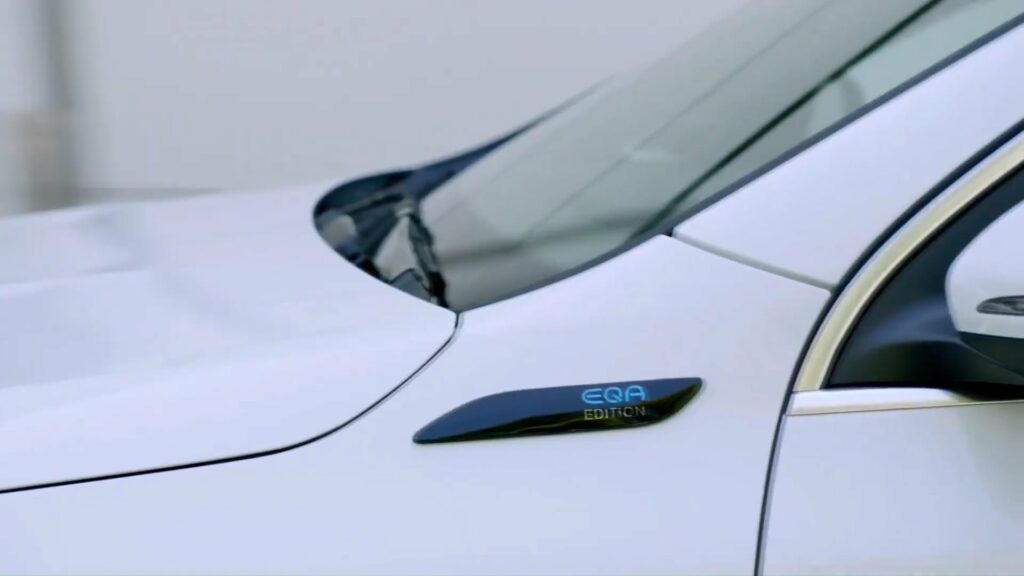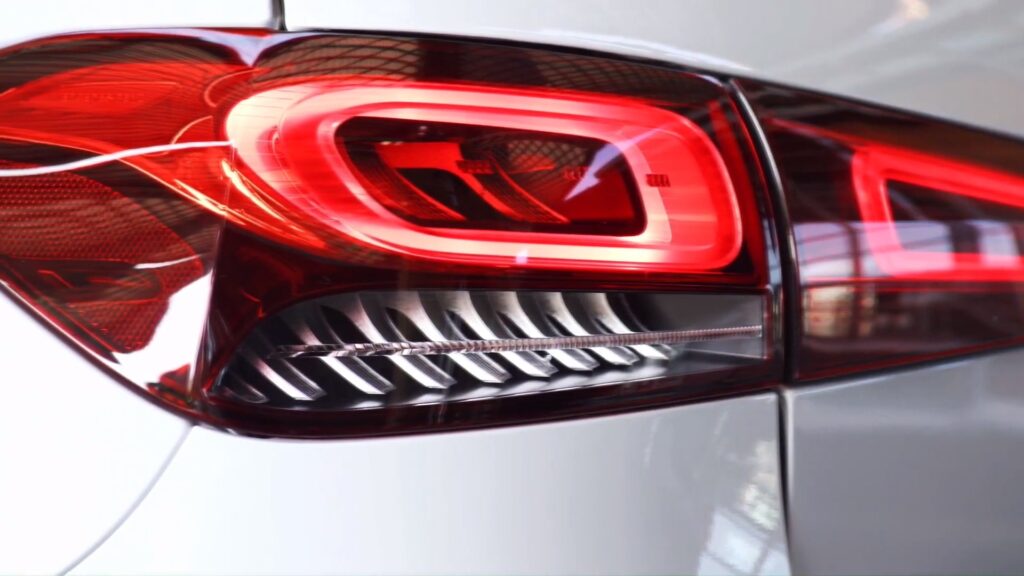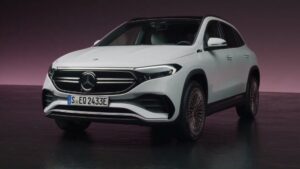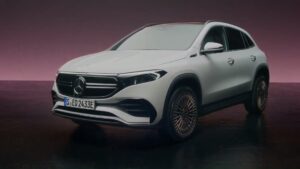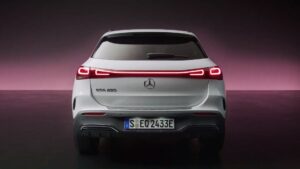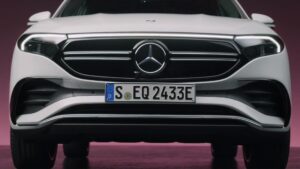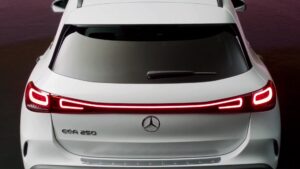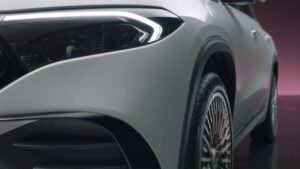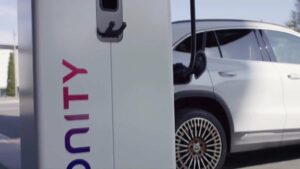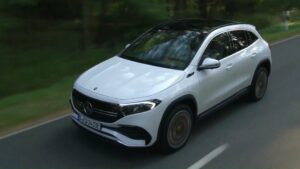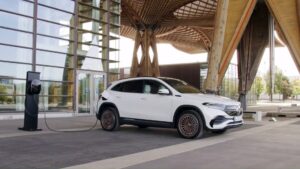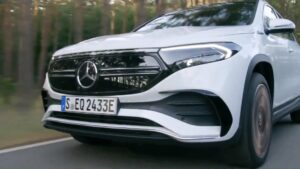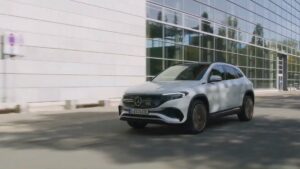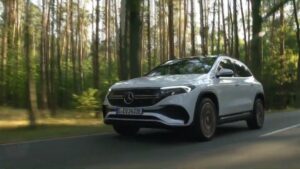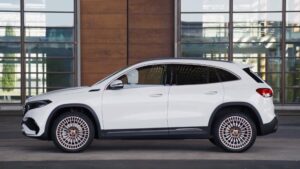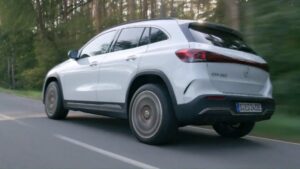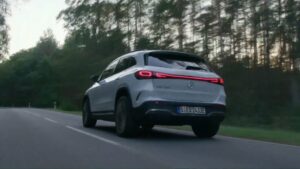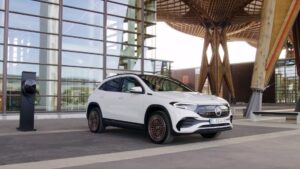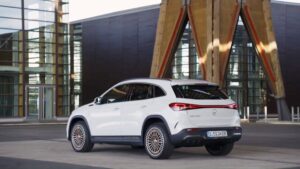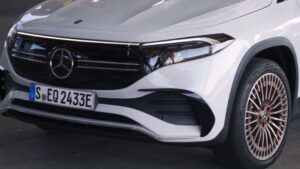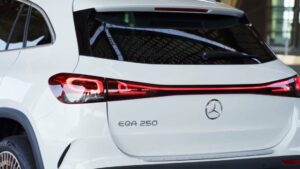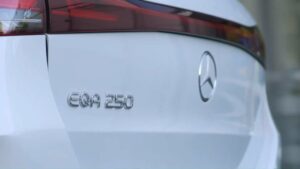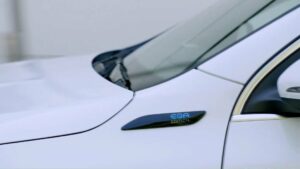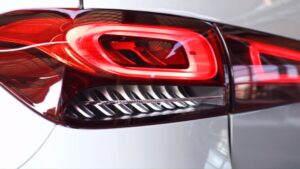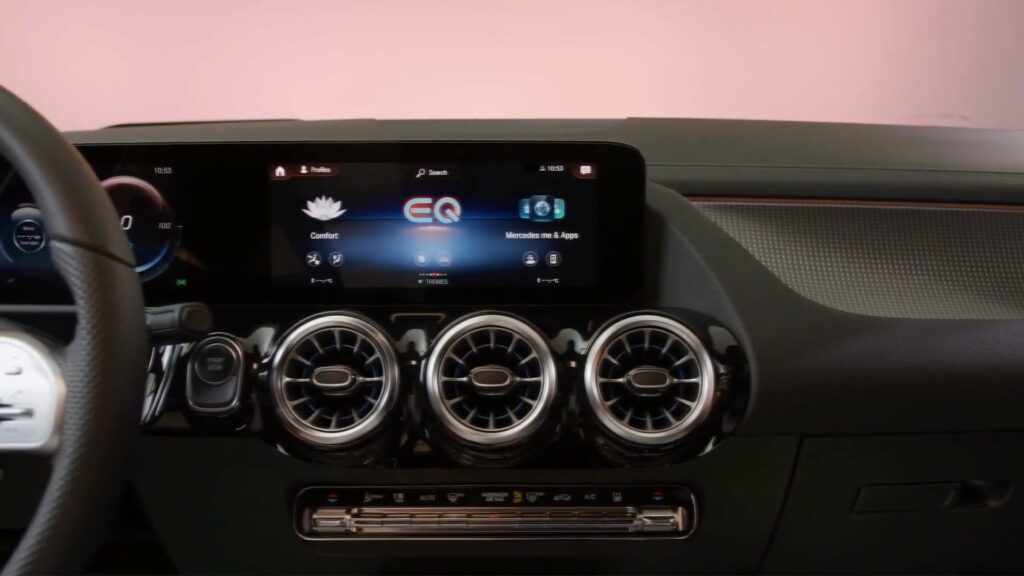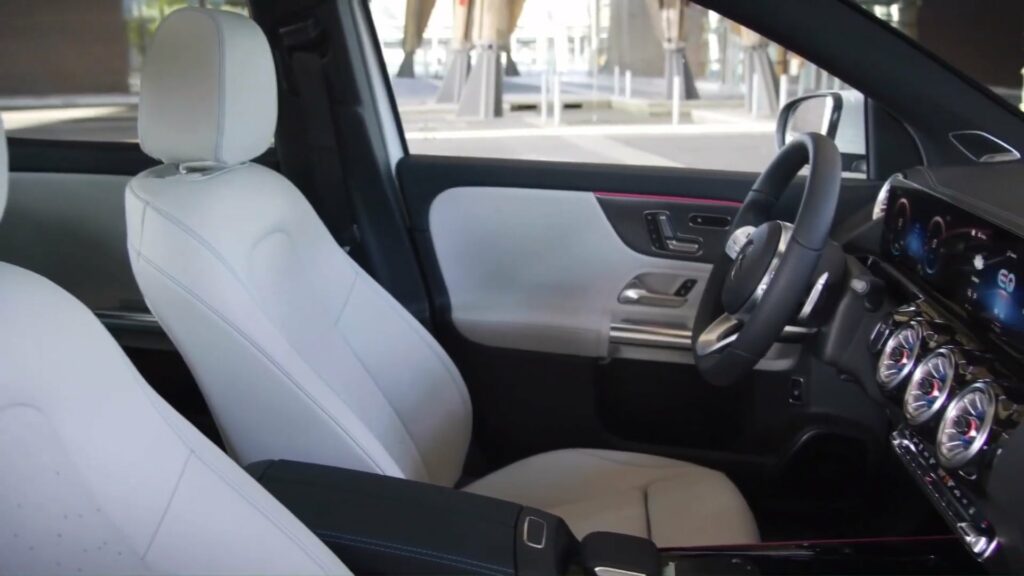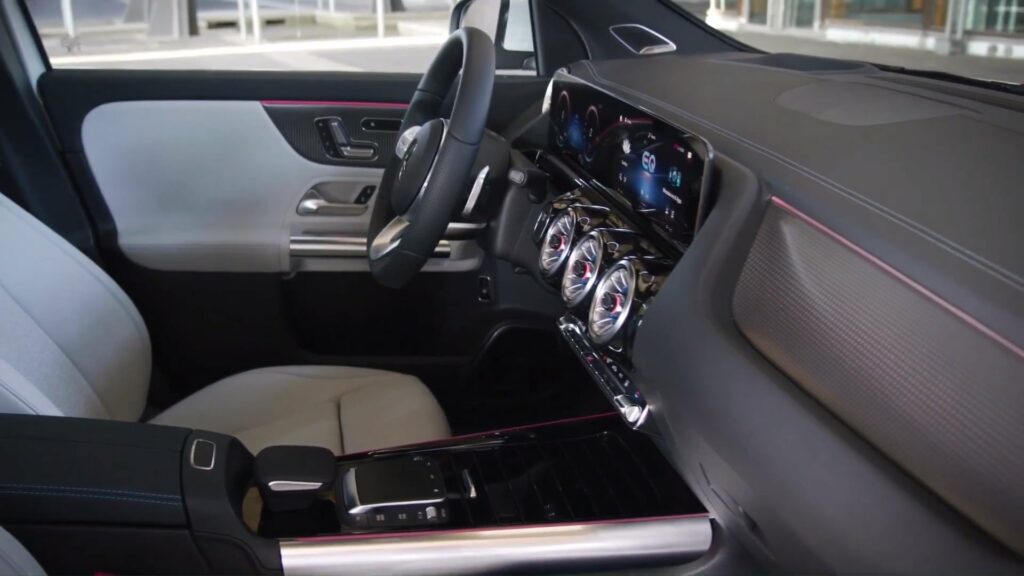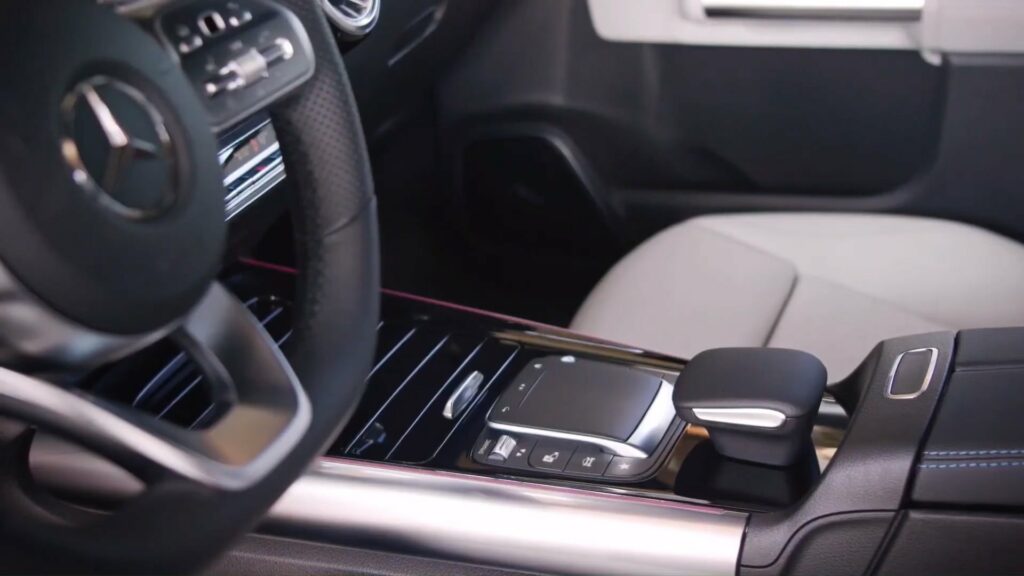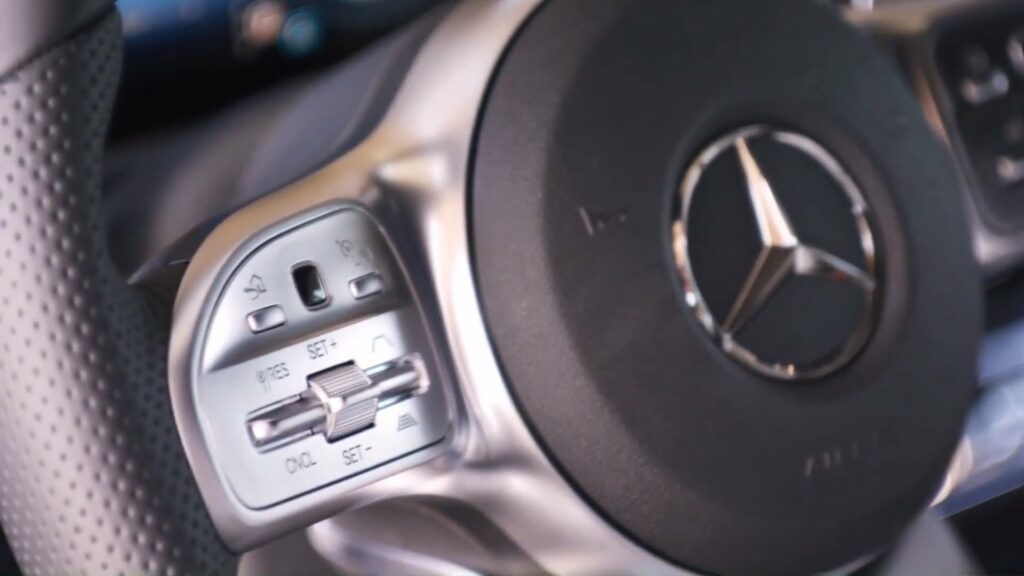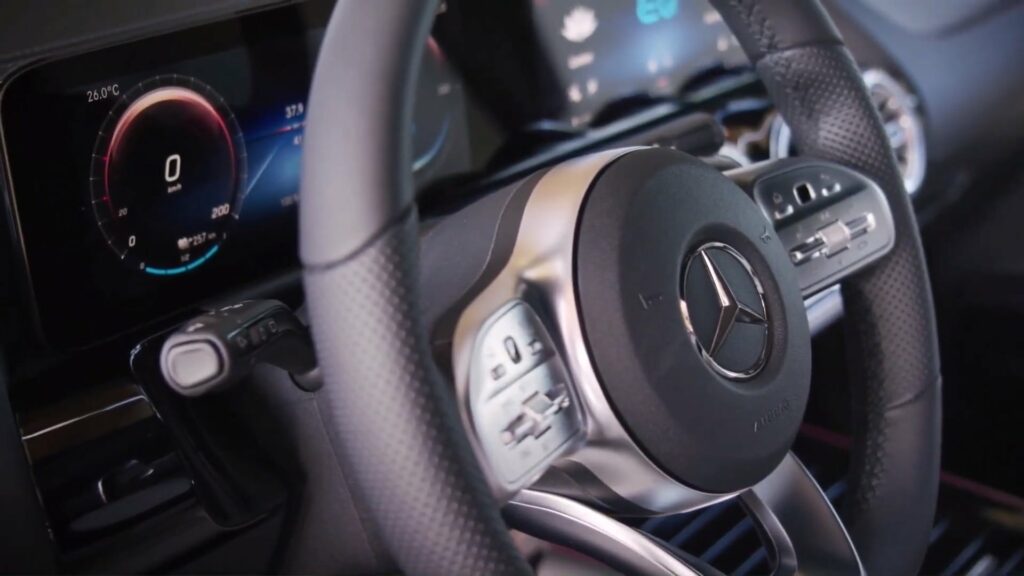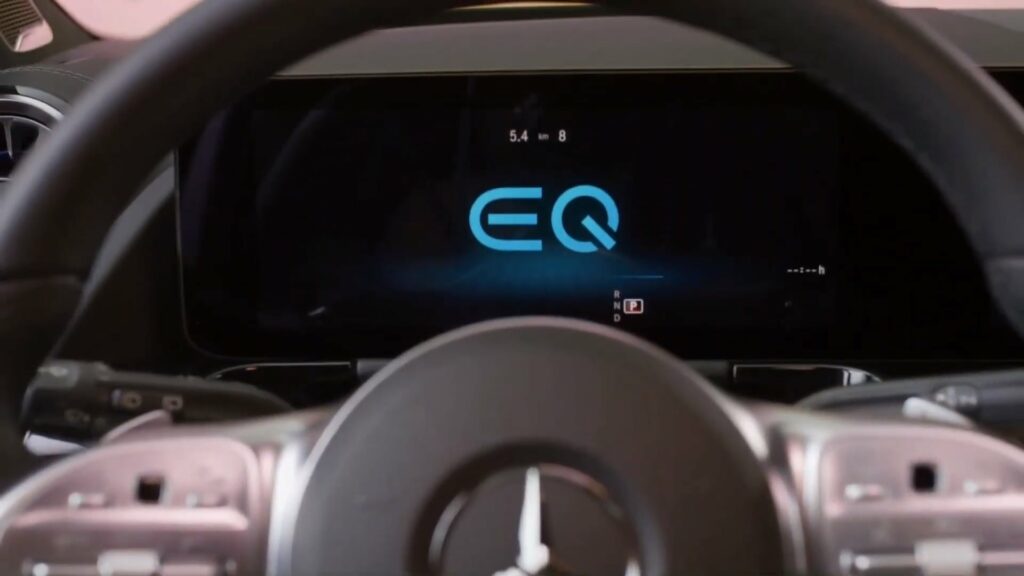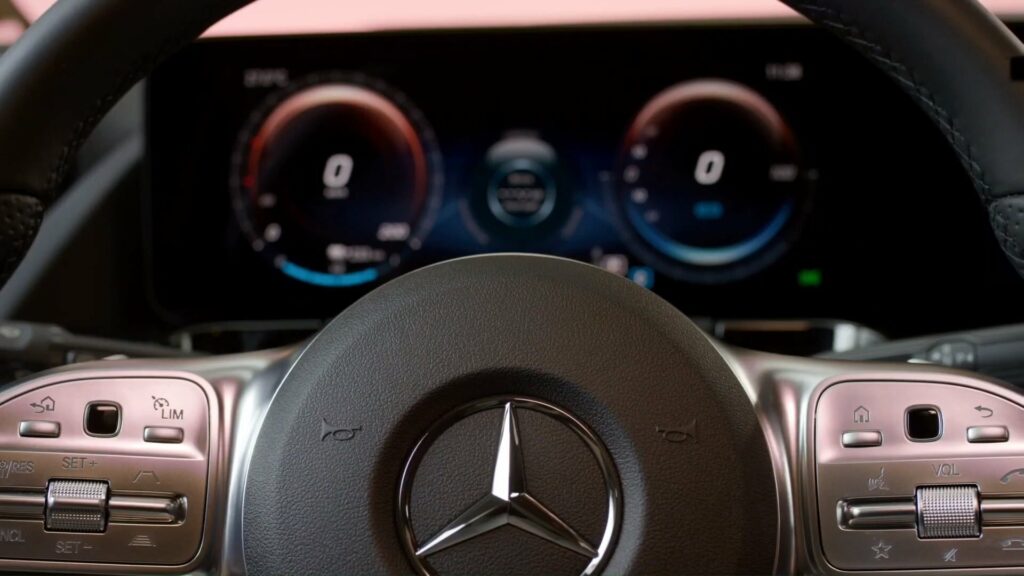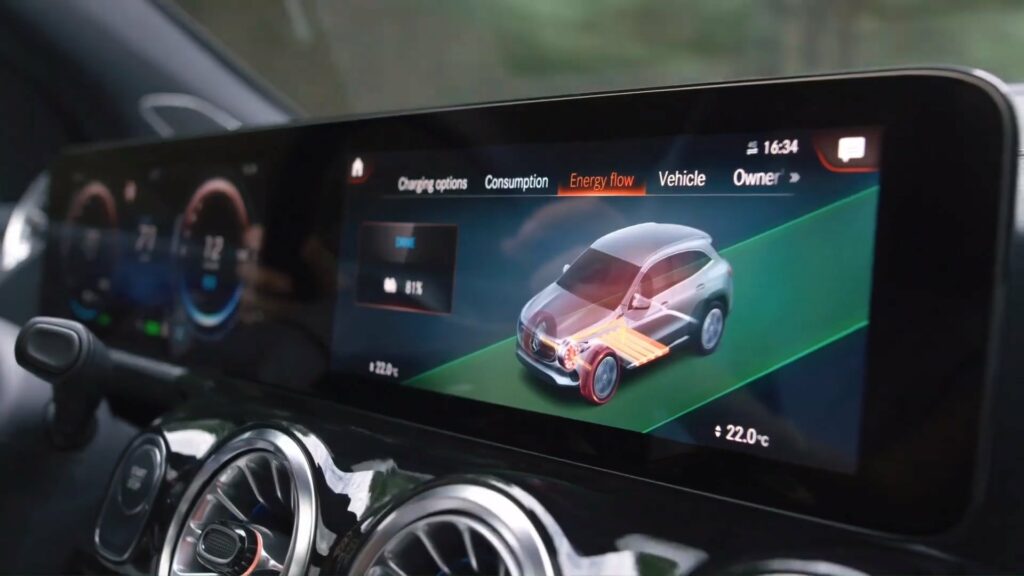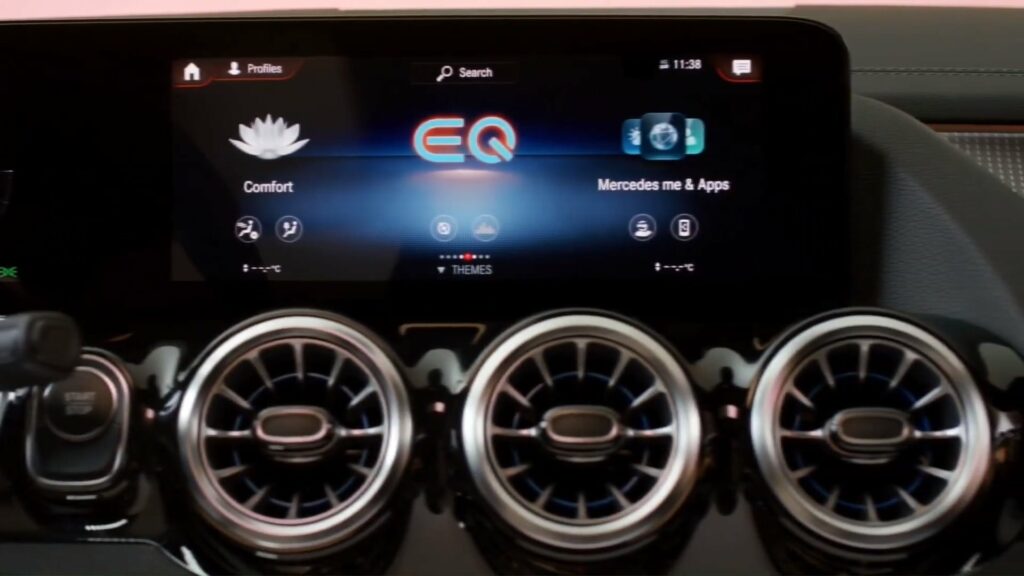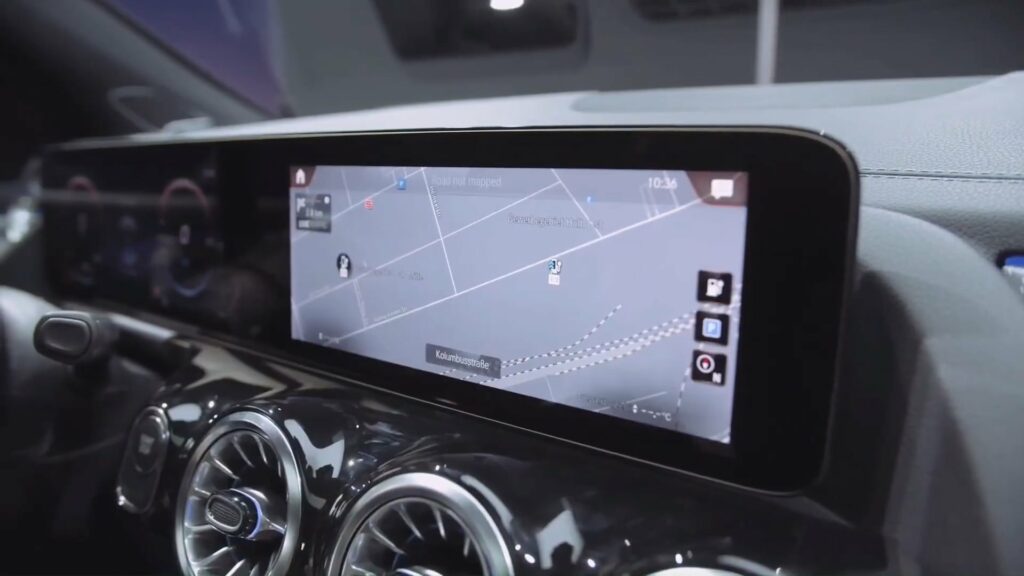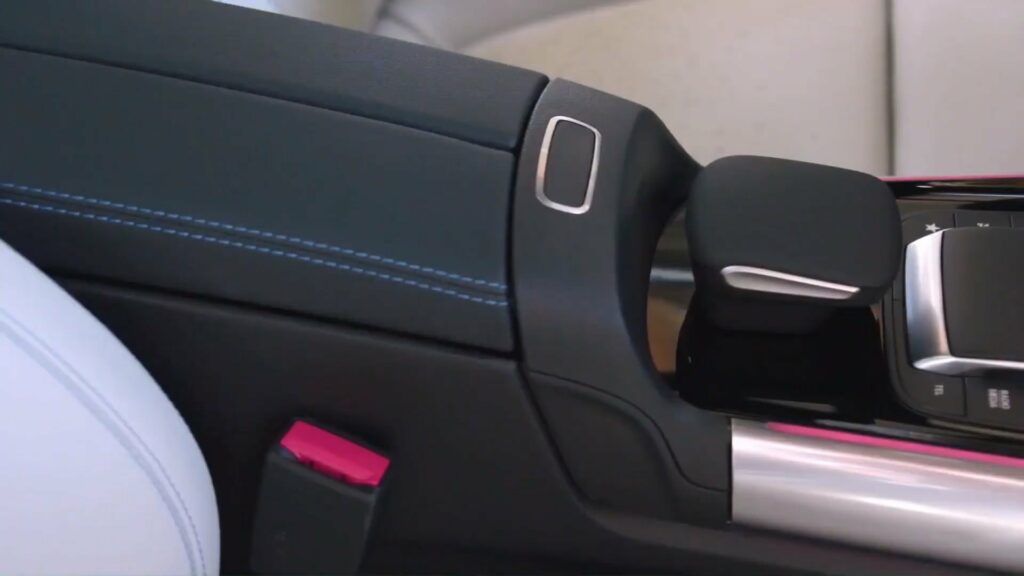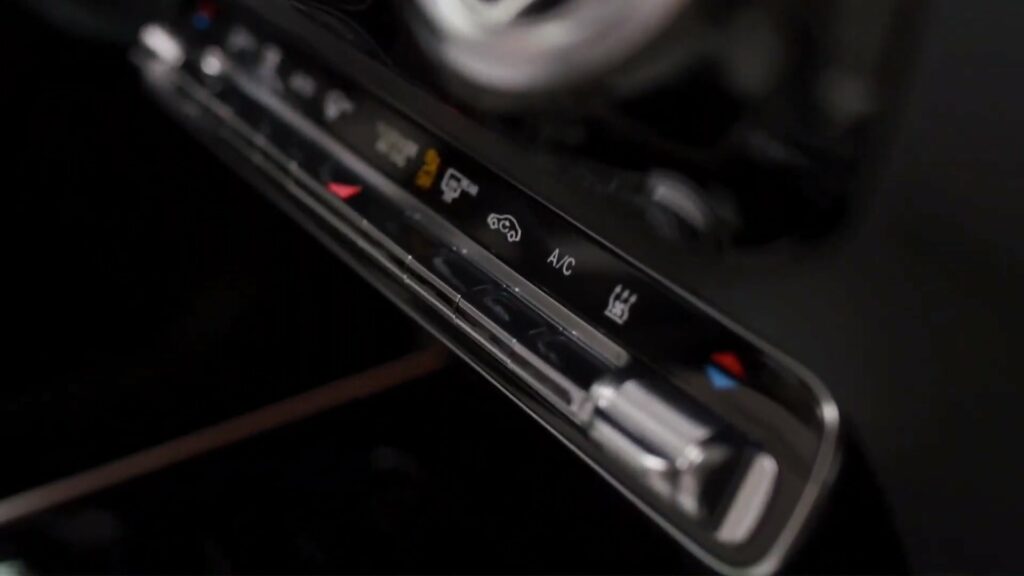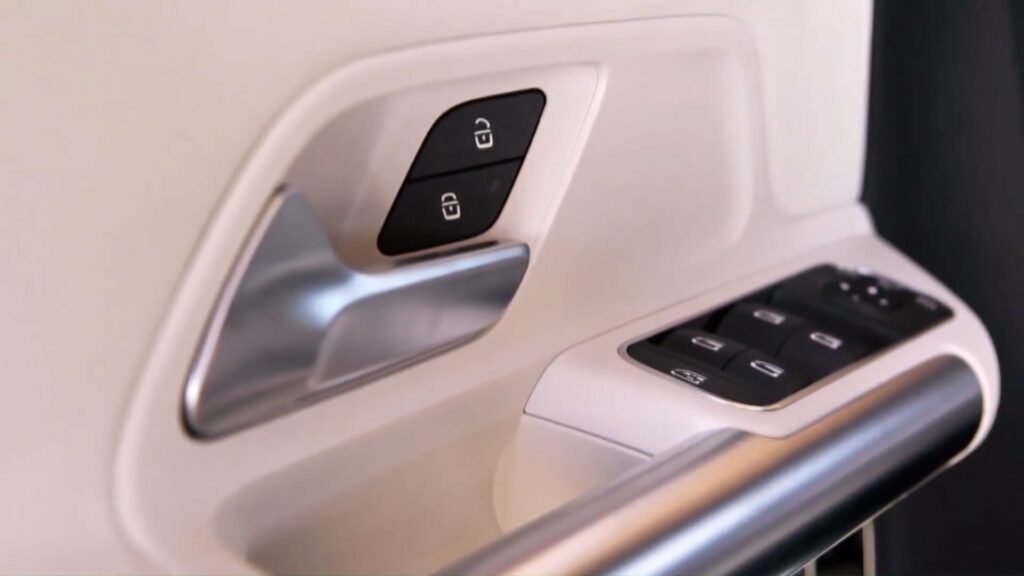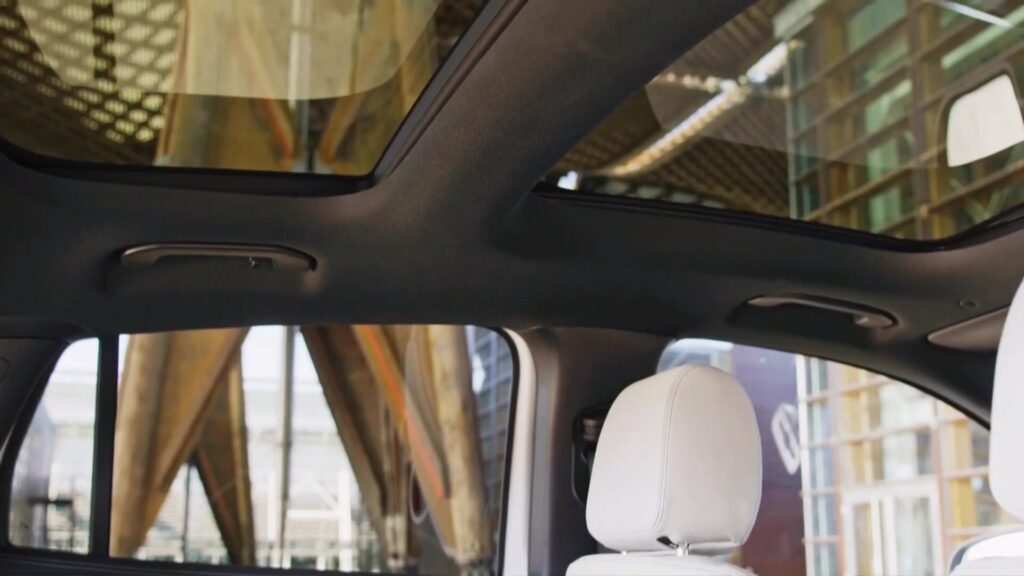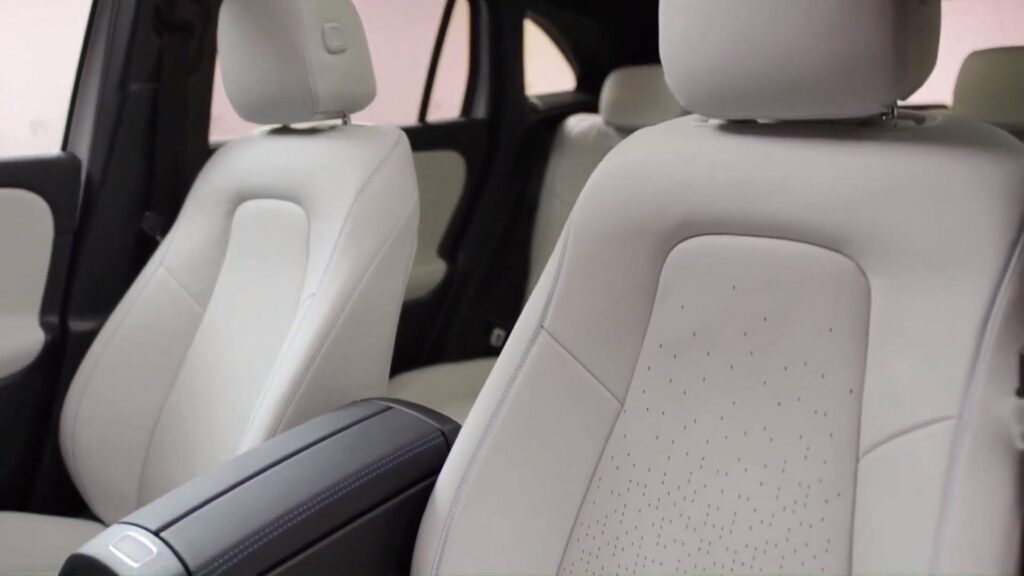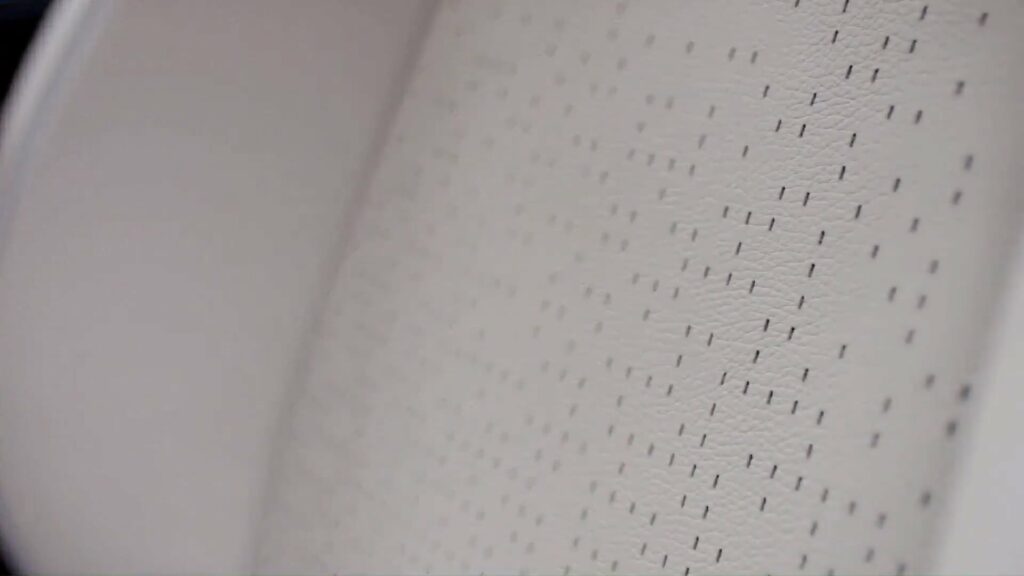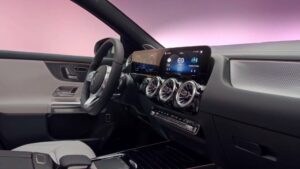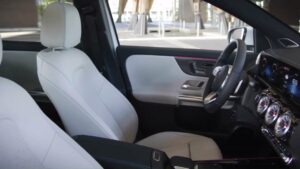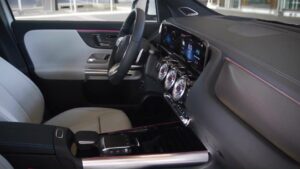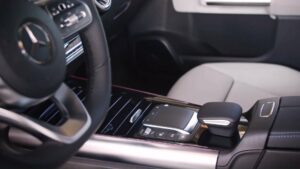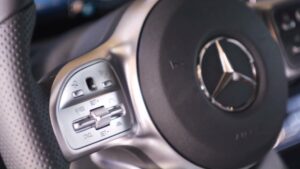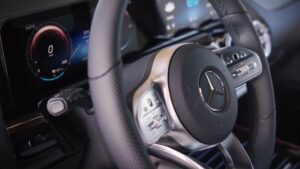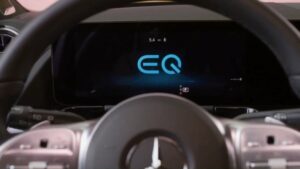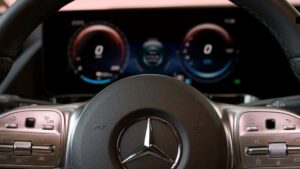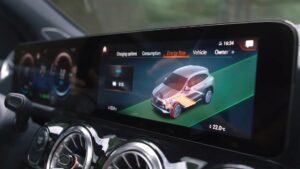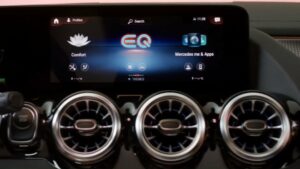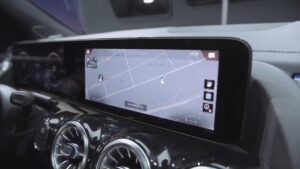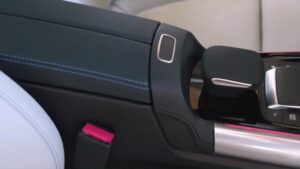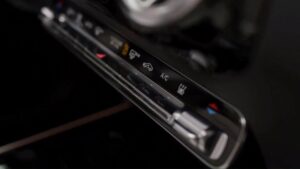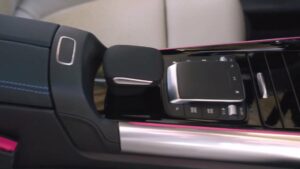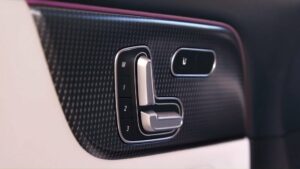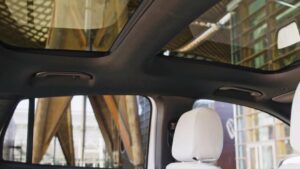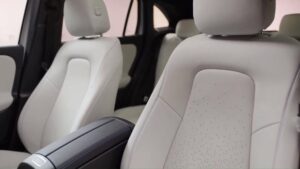Mercedes EQA 250
The Mercedes EQA 250 is an all-electric compact SUV that has been launched by Mercedes-Benz in 2021. It is part of the brand’s line of electric vehicles known as the EQ, which includes models such as the EQC and EQS.

The EQA 250 is powered by a single electric motor that produces 140 kW, 375 Nm of torque. The engine is paired with a 79.8 kWh battery, which gives the vehicle a range of up to 355 km on a single charge. The EQA 250 is also equipped with a constant current fast charging function, which means that the battery can be charged from 10% to 80% in about 30 minutes.
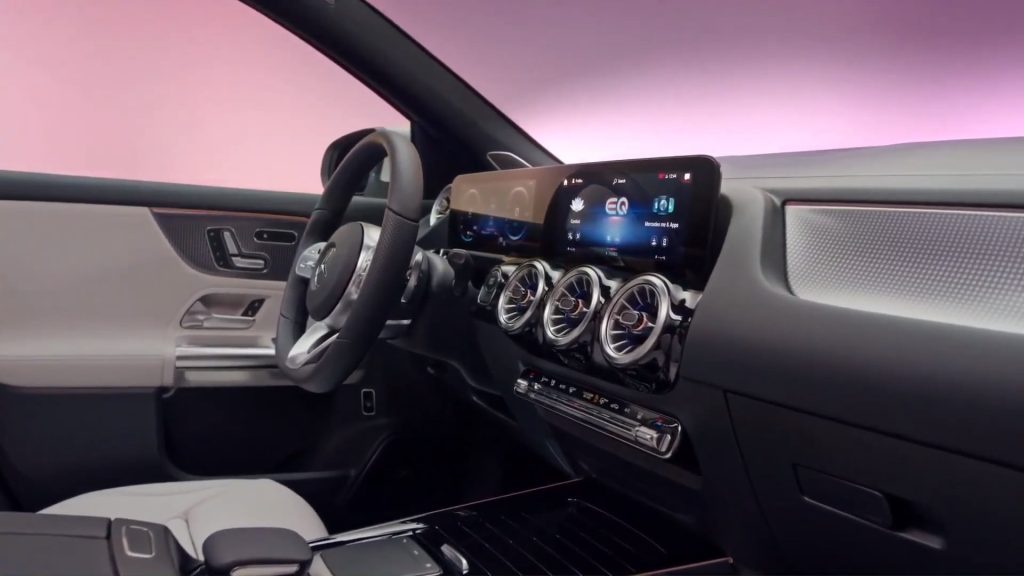
In terms of specifications, the EQA 250 can accelerate from 0 to 100 km (60 mph) in 8.9 seconds, and its top speed is 160 km. The car is also equipped with a number of advanced features and driver assistance technologies, including a digital dashboard and infotainment system.
Overall, the Mercedes EQA 250 offers a combination of luxury, performance, and eco-friendliness, making it an attractive option for drivers looking for a practical and versatile electric SUV.
| Performance | |
| Acceleration 0 – 100 km/h | 8.9 sec |
| Top Speed | 160 km/h |
| Electric Range | 355 km |
| Total Power | 140 kW (190 PS) |
| Total Torque | 375 Nm |
| Drive | Front |
| Battery and Charging | |
| Battery Capacity | 79.8 kWh |
| Battery Useable | 66.5 kWh |
| Europe | |
| Charge Port | Type 2 |
| Port Location | Right Side – Rear |
| Charge Power | 11 kW AC |
| Charge Time (0->355 km) | 7h15m |
| Charge Speed | 50 km/h |
| Fastcharge Port | CCS |
| FC Port Location | Right Side – Rear |
| Fastcharge Power (max) | 100 kW DC |
| Fastcharge Time (36->284 km) | 35 min |
| Fastcharge Speed | 420 km/h |
| Energy Consumption | |
| EVDB Real Range | |
| Range | 355 km |
| Vehicle Consumption | 187 Wh/km |
| CO2 Emissions | 0 g/km |
| Vehicle Fuel Equivalent | 2.1 l/100km |
| NEDC Ratings | |
| Range | 486 km |
| Rated Consumption | 157 Wh/km |
| Vehicle Consumption | 137 Wh/km |
| CO2 Emissions | 0 g/km |
| Rated Fuel Equivalent | 1.8 l/100km |
| Vehicle Fuel Equivalent | 1.5 l/100km |
| WLTP Ratings (TEL) | |
| Range | 426 km |
| Rated Consumption | 177 Wh/km |
| Vehicle Consumption | 156 Wh/km |
| CO2 Emissions | 0 g/km |
| Rated Fuel Equivalent | 2.0 l/100km |
| Vehicle Fuel Equivalent | 1.8 l/100km |
| WLTP Ratings (TEH) | |
| Range | 398 km |
| Rated Consumption | 191 Wh/km |
| Vehicle Consumption | 167 Wh/km |
| CO2 Emissions | 0 g/km |
| Rated Fuel Equivalent | 2.1 l/100km |
| Vehicle Fuel Equivalent | 1.9 l/100km |
|
TEL = Test Energy Low | TEH = Test Energy High
|
|
|
Rated = official figures as published by manufacturer. Rated consumption and fuel equivalency figures include charging losses.
|
|
|
Vehicle = calculated battery energy consumption used by the vehicle for propulsion and on-board systems.
|
|
| Real Energy Consumption Estimation between 129 – 266 Wh/km | |
| City – Cold Weather * | 190 Wh/km |
| Highway – Cold Weather * | 266 Wh/km |
| Combined – Cold Weather * | 222 Wh/km |
| City – Mild Weather * | 129 Wh/km |
| Highway – Mild Weather * | 208 Wh/km |
| Combined – Mild Weather * | 164 Wh/km |
|
Energy use for each trip will vary considerably depending on the driver and the conditions. Therefore, we have provided a range of estimates which can be useful in developing an understanding of the potential benefits of this technology. |
|
| Dimensions and Weight | |
| Length | 4463 mm |
| Width | 1834 mm |
| Width with mirrors | 2020 mm |
| Height | 1620 mm |
| Wheelbase | 2729 mm |
| Weight Unladen (EU) | 2040 kg |
| Gross Vehicle Weight (GVWR) | 2470 kg |
| Max. Payload | 505 kg |
| Cargo Volume | 340 L |
| Cargo Volume Max | 1320 L |
| Cargo Volume Frunk | 0 L |
| Roof Load | No Data |
| Tow Hitch Possible | Yes |
| Towing Weight Unbraked | 750 kg |
| Towing Weight Braked | 750 kg |
| Vertical Load Max | 80 kg |
| Miscellaneous | |
| Seats | 5 people |
| Isofix | No Data |
| Turning Circle | 11.4 m |
| Platform | DAIMLER MFA2 |
| Car Body | SUV |
| Segment | JC – Medium |
| Roof Rails | Yes |
| EV Dedicated Platform | No |
Home and Destination Charging (0 -> 100%)
A public charging station is required to use the highest possible charging rate. The EVSE/charging station’s charging capacity affects how long it takes to fully charge the battery. The table below shows all possible options for fully charging the Mercedes EQA 250.
In Europe, plugging an electric car into an outlet is often as easy as plugging it into a household outlet, but there are differences from country to country. The table below shows the different ways to charge the Mercedes EQA 250, but in some countries some chargers may not be available.
Type 2 ( IEC 62196)

| Charging Point | Max. Power | Power | Time | Rate |
| Wall Plug (2.3 kW) | 230V / 1x10A | 2.3 kW | 34 hours | 10 km/h |
| 1-phase 16A (3.7 kW) | 230V / 1x16A | 3.7 kW | 21h15m | 17 km/h |
| 1-phase 32A (7.4 kW) | 230V / 1x32A | 7.4 kW | 10h45m | 33 km/h |
| 3-phase 16A (11 kW) | 400V / 3x16A | 11 kW | 7h15m | 49 km/h |
| 3-phase 32A (22 kW) | 400V / 3x16A | 11 kW | 7h15m | 49 km/h |
Fast Charging (10 -> 80%)
If you want to enjoy driving an electric car, one of the most important features to consider is the number of miles per hour the car can travel while charged. This is called the “range” of the car. All electric cars have a certain range, even if they are 100% charged. This is because they do not have an internal combustion engine to lean on if you need to drive a long distance.
Max. Power: The maximum power provided by the charging point
Avg. Power: The average power provided by the charging point during a session of 10% to 80%.
Time: the time it takes to charge from 10% to 80%
Speed: the average charging rate during the session of 10% to 80%
Combined Charging System (CCS Combo 2)
| Charging Point | Max. Power | Avg. Power | Time | Rate |
| CCS (50 kW DC) | 50 kW | 45 kW | 65 min | 220 km/h |
| CCS (100 kW DC) | 100 kW | 85 kW | 35 min | 420 km/h |
| CCS (150 kW DC) | 100 kW | 85 kW | 35 min | 420 km/h |
| Brand | Mercedes |
| Model | EQA 250 |
| Body Style | SUV |
| Car Engine | electric |
| Motor power | 140 |
| Maximum Torque, Nm | 375 |
| Battery Energy, kWh | 79.8 |
| Power reserve (NEDC/EPA/WLTP), km | - / - / 355 |
| Level Charging (230/400/DC), hours | - / 7.15 / 0.35 |
| Electrical Acceleration, 0-100 km/h (0-62.1 mph) in sec | 8.9 |
| Top Speed, km/h | 160 |
